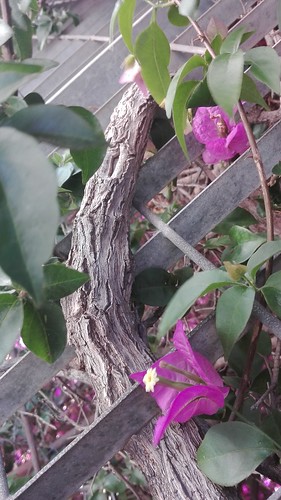er proteins including the DNA ligase IV/XRCC4 complex which repairs the break. The term alternative-NHEJ is generally used to describe any NHEJ event which lacks one or more of the core classical NHEJ proteins e.g. ku70, ku80, Lig4, XRCC4. AltNHEJ, sometimes referred to as backup-NHEJ or micro-homology-mediated end joining , is not as well characterised and may well include several distinct repair pathways. It has been suggested that alt-NHEJ is inhibited by classical-NHEJ. Recently, there has been increased research into NHEJ in mammalian systems, as its importance with regard to cancer treatment has become clear. NHEJ promotes cancer cell survival and inhibitors of NHEJ can be used to increase the  sensitivity of tumours to DNA damaging drugs or radiation treatment. While NHEJ research is less advanced in plants there is considerable interest in the process, as it is considered the major pathway for transgene insertion by particle bombardment, Agrobacterium and zinc-finger nuclease mediated transformation and also for the insertion of cytoplasmic organellar DNA. A better understanding of this pathway may lead to development of more advanced transformation techniques and manipulation of the pathway may enable efficient gene targeting by HR in higher plants. Despite the large body of work investigating NHEJ there are still several shortcomings in the analysis of this form of DSB repair. A number of these arise from the necessity for tissue culture GLPG0634 site selection to generate clonal cell lines arising from cells that have undergone individual repair events. The requirement for cell culture restricts analysis to tissues or cell lines able to be cultured efficiently, preventing PubMed ID:http://www.ncbi.nlm.nih.gov/pubmed/22187127 investigation of NHEJ in some tissues of interest. In addition, the selection and maintenance of multiple cell lines is not only labour intensive and time-consuming, but it also hinders analyses needed to uncover subtle variations in NHEJ repair, and to observe rare classes of repair. These problems require the development of a high-throughput pathway for the analysis of A Comparison of NHEJ in Tobacco and Arabidopsis NHEJ repair events without the need for rounds of tissue culture, selection and plant regeneration. Over the past decade single molecule PCR has become a powerful method for examining DNA sequences at the single cell level. It has been used previously in wide ranging applications and is ideally suited to the analysis of somatic mutations as it allows amplification of a target locus from unique template DNAs. Therefore this technique provides a tool with which to investigate DSB repair, enabling rapid amplification and sequencing of individual repair junctions. We have used smPCR to investigate NHEJ using a genetic system that allows induction of DNA double-strand breaks at a specific nuclear location in planta, followed by amplification of individual NHEJ repair junctions. We validated the use of this system in both Arabidopsis and tobacco, revealing similar patterns of NHEJ repair in both species and finding insertions at repair sites in Arabidopsis in contrast to previous studies. In addition, we demonstrated that sequence insertions at sites of DSB repair in tobacco involve a non-classical NHEJ repair pathway. In the course of this work we also evaluated the use of the dao1 dual selectable marker gene in tobacco. While both positive and negative selection worked well in seedling selection experi- ments, we caution that only positive selection was found to
sensitivity of tumours to DNA damaging drugs or radiation treatment. While NHEJ research is less advanced in plants there is considerable interest in the process, as it is considered the major pathway for transgene insertion by particle bombardment, Agrobacterium and zinc-finger nuclease mediated transformation and also for the insertion of cytoplasmic organellar DNA. A better understanding of this pathway may lead to development of more advanced transformation techniques and manipulation of the pathway may enable efficient gene targeting by HR in higher plants. Despite the large body of work investigating NHEJ there are still several shortcomings in the analysis of this form of DSB repair. A number of these arise from the necessity for tissue culture GLPG0634 site selection to generate clonal cell lines arising from cells that have undergone individual repair events. The requirement for cell culture restricts analysis to tissues or cell lines able to be cultured efficiently, preventing PubMed ID:http://www.ncbi.nlm.nih.gov/pubmed/22187127 investigation of NHEJ in some tissues of interest. In addition, the selection and maintenance of multiple cell lines is not only labour intensive and time-consuming, but it also hinders analyses needed to uncover subtle variations in NHEJ repair, and to observe rare classes of repair. These problems require the development of a high-throughput pathway for the analysis of A Comparison of NHEJ in Tobacco and Arabidopsis NHEJ repair events without the need for rounds of tissue culture, selection and plant regeneration. Over the past decade single molecule PCR has become a powerful method for examining DNA sequences at the single cell level. It has been used previously in wide ranging applications and is ideally suited to the analysis of somatic mutations as it allows amplification of a target locus from unique template DNAs. Therefore this technique provides a tool with which to investigate DSB repair, enabling rapid amplification and sequencing of individual repair junctions. We have used smPCR to investigate NHEJ using a genetic system that allows induction of DNA double-strand breaks at a specific nuclear location in planta, followed by amplification of individual NHEJ repair junctions. We validated the use of this system in both Arabidopsis and tobacco, revealing similar patterns of NHEJ repair in both species and finding insertions at repair sites in Arabidopsis in contrast to previous studies. In addition, we demonstrated that sequence insertions at sites of DSB repair in tobacco involve a non-classical NHEJ repair pathway. In the course of this work we also evaluated the use of the dao1 dual selectable marker gene in tobacco. While both positive and negative selection worked well in seedling selection experi- ments, we caution that only positive selection was found to